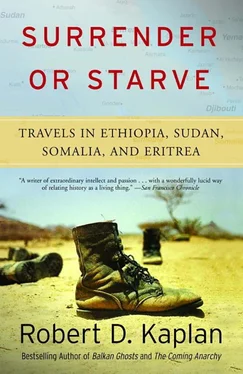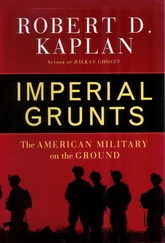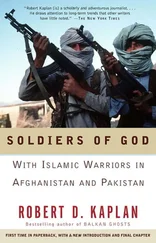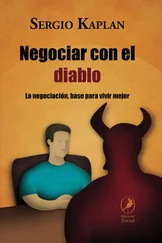Mengistu had a predecessor whose face was known throughout the world—Haile Selassie. To many, Ethiopia—a Greek word meaning the land of the “burned faces”—still brings to mind that other image in addition to the one of the starving child: Haile Selassie, the little dark man with the beard, as small as he was larger than life. To understand the world of the starving child, one must first flesh out the quaint image of the storybook emperor.
He is like some figure out of a dream. Clad in a cape and pith helmet, or bedecked with medals, Emperor Haile Selassie I, Negus Negusti (King of Kings), Conquering Lion of Judah, Elect of God, appears in our minds in a series of flashes, each only a few seconds long, separated not only by years but also by decades. On June 30, 1936, at the League of Nations in Geneva, he wore a black cape over a white tunic and pleaded from the rostrum for help against Benito Mussolini, whose fascist Italian army had invaded the primitive land of Ethiopia with tanks and poison gas. No help ever came. Henceforth, the emperor always would be enshrouded in sympathy, part of the West’s guilty conscience, the face of a people whom the democracies had failed. In January 1941, he is back again. This time the face is half buried under an oversized pith helmet, the beard jutting out from beneath, more prominent than ever. The emperor has crossed the border from Sudan to regain his kingdom; here he is quixotic, yet on the verge of real triumph. At his side, increasing the aura of romance, is Orde Wingate, the British major and savant of the Old Testament. Wingate is himself a man of near-legend, who later will die in the jungles of Burma fighting the Japanese, but not before he has trained the Jewish army in Palestine, giving Moshe Dayan his most valuable lessons in the art of warfare. Finally, there is November 25, 1963, the first memory I and many of my generation have of Haile Selassie. President John Kennedy’s coffin is passing through the streets of Washington, D.C., and dignitaries from around the world are escorting the caisson. The emperor, in full military regalia, is there. He marches near Charles de Gaulle, the tallness of one highlighting the shortness of the other. What a sight! So small and seemingly vulnerable, yet so proud and full of authority. Millions of Americans, glued to their television sets that weekend, always will remember the marching emperor. Haile Selassie signified not only a distant, fairy-tale kingdom, but the very world beyond the United States and Europe in all its diversity. Had the turbaned wise men from the East come to pay homage to the dead young president, it would have been only slightly more impressive.
The truth about Haile Selassie is that, like the little, medal-bedecked man on the television screen, he really was an emperor, and like any absolute monarch, he required a large dose of cruelty to keep his throne and the empire that went with it. The images on television and in the newsreels didn’t lie. The deception was the viewer’s. The U.S. public was so dazzled with the spectacle that no one thought to look beyond it, or even closely at it. Why bother? After all, he was pro-U.S. He was seeking to modernize his country. Ethiopia was so far away that it barely seemed real. Haile Selassie’s last appearance in our collective memories was almost a quarter century ago. Communications satellites didn’t yet exist. Whatever sins the emperor did commit were years away from being effectively brought into Western living rooms.
The official U.S. attitude toward Ethiopia was similarly indulgent. The emperor welcomed the United States, granting permission for a military communications complex near Asmara, the capital of Eritrea, so naturally the United States supported him. The evils of his rule certainly were well known to U.S. policymakers, and generous economic aid from Washington was designed to mitigate the suffering of the Ethiopian masses. But beyond that, U.S. officials, as with most everybody else, preferred not to criticize. Pushing for reform would have been like tinkering with the divine order. We all stood in awe of Haile Selassie. C. L. Sulzberger, chief foreign correspondent of The New York Times, related in his memoirs that he bowed three times when meeting the emperor in 1952. Unlike other African leaders, Haile Selassie was not looked down on by Westerners, either in cultural or racial terms.
As strange and primitive as Ethiopia was, it had a distinctly Middle Eastern flavor, with vague bridges to the West. Although the faces of the people were black, their sharp features were not altogether African. The emperor claimed descent from the Hebrew King Solomon and the Yemeni Queen of Sheba, and like the old imam of Yemen, the emperor kept lions as pets. Ethiopian names had a Hebraic ring, and there were a significant number of Jews, known disparagingly as falashas (strangers), among the northern rural population. The Christian religion of Ethiopia, like the written language, went back to antiquity and was heavily grounded in the Pentateuch. During the five-year Italian occupation of Addis Ababa (1936–1941), several members of the royal family spent their exile in Jerusalem. There was a biblical dimension to Ethiopia that not even modern Israel could claim. Ethiopia’s roots as an empire were deep and reached back to Roman times when it was forged by tribespeople from southern Arabia. Ethiopia was not some artificially created African state, whose boundaries had been drawn up on the spur of the moment by a group of European powers. The emperor had been in a position of power since 1916. Coup watching was not a pastime of the diplomatic circuit in Addis Ababa the way it was elsewhere on the continent.
Blinded by the armor of tradition, few noticed that the portrait of power was flawed, and that cracks were opening up on the canvas. The noble bearing and the stern, impassive gaze were not a result of high birth, but of race. Haile Selassie was an Amhara. Rich or poor to the point of starving, Amharas see themselves as born to the purple: millions have the emperor’s piercing eyes. “Being an Amhara is… belonging to a superior category of human beings. This is not simple ethnocentrism; it reflects rather a basically aristocratic orientation,” wrote Levine in Wax and Gold. Amharas account for only about one-fourth of Ethiopia’s 42 million people, yet have imposed their rule over the whole population. To the world, Haile Selassie represented Ethiopia. But to the large majority of Ethiopians, Haile Selassie was an Amhara imperialist, with no more, nor less, popular legitimacy than that given to the British viceroy in India during the last phase of the Raj. The borders of this Amhara empire had been drawn in the late nineteenth century by Haile Selassie’s predecessor, Emperor Menelik II, whose armies swept out of their home province of Shoa to subjugate the more populous Oromo kingdoms in the south and southeast. In the north, Menelik stopped the advance of the Italian army—the best-equipped colonial force in Africa—which had marched out of Eritrea to conquer all Ethiopia. The Battle of Adowa, which took place on a Sunday, March 1, 1896, marked the first time that an African army ever had defeated a European one. The empire that Menelik bequeathed to his descendants—modern-day Ethiopia—was larger than Texas, Oklahoma, and New Mexico combined.
Along with the Thais, the North Yemenis, and the Afghans, the Ethiopian Amharas never have been truly colonized. Their national institutions and cultural patterns have been subverted only twice—by the Italian fascists, from 1936 till 1941, and by the Soviet communists, from the late 1970s until the present.
Ethiopians who are not Amharas, especially Eritreans, interpret this history differently. In a sense, not only were the Italians defeated at Adowa in 1896, but the Eritreans were, too. Eritreans made up a significant part of Italy’s sixteen-thousand-troop invasion force, and one thousand Eritreans were taken prisoner by Menelik, who ordered that their right hands and left feet be cut off. For Menelik, the Eritreans were traitors. For the Eritreans, Menelik was a colonialist, more dangerous than the Italians because he was on Eritrea’s border. Almost forty years later, when another Italian army, a fascist one, advanced into Ethiopia, scimitar-wielding Eritrean irregulars were in the front lines; the world may have sympathized with Haile Selassie against Mussolini, but much of Ethiopia’s own population did not. The 1935 Italian invasion, coming as it did during the rise of fascism in Europe and as a prelude to World War II, is remembered for the sickening newsreel images of a white European army, equipped with the most lethal modern weaponry, brutalizing a primitive black African nation. But the images were partly false. Many of the white soldiers not shown on the screen were black; they were Eritreans and others for whom the Amharas of Haile Selassie were the true enemy.
Читать дальше












